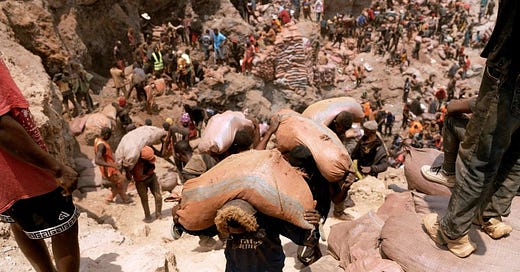Your iPhone Was Built with Child Labor

Artisanal miners in the Congo carry sacks of cobalt ore, a vital element in the making of smartphones and EV batteries. (Junior Kannah via Getty Images)
‘Rarely in history has the practice of preying on the weak been so severe, generated such profit, and touched the lives of so many.’
45
In 2022, I flew to Kigali, the capital of Rwanda, with an eye toward driving west over the border into the Democratic Republic of Congo to report a story about a Bitcoin mine and a story about a Belgian prince trying to save mountain gorillas.
I met my six-foot-four fixer at a Mexican restaurant, and, over beers and carnitas, explained what I had in mind…
Enjoying the story?
Enter your email to read this article and receive our daily newsletter.
Already have an account?
Sign In




